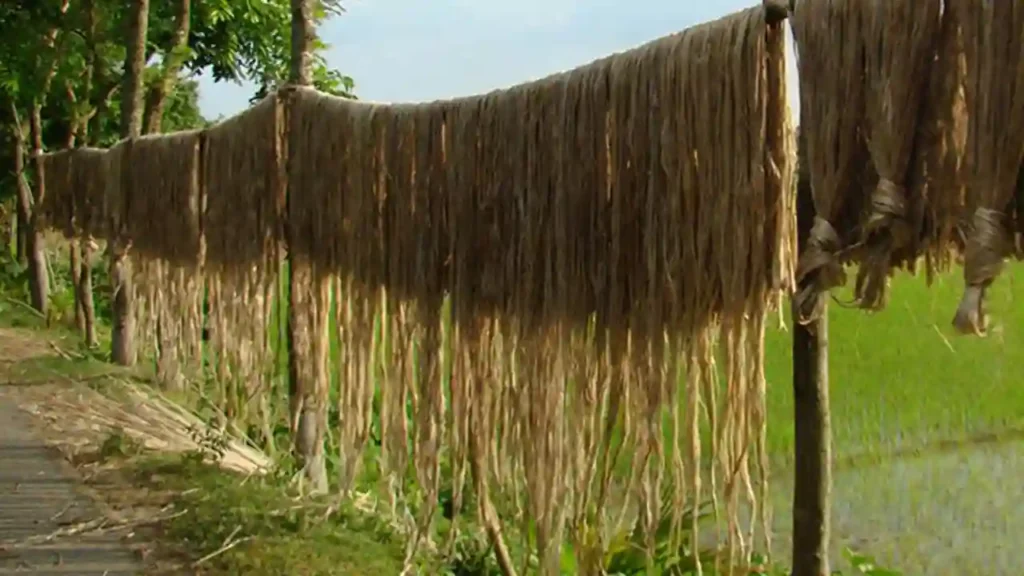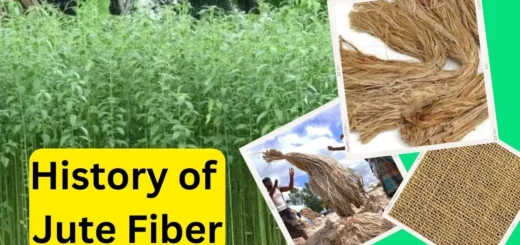15 Types of Defects of Jute Fiber with effective solution
Introduction:
Almost 15 types of defects of jute fiber with effective solutions will be discussed in this article. Although jute fiber is known as the “golden fiber” for its versatility, environmental friendliness, and extensive use in many industries, it is not immune to imperfections like any natural material. These imperfections, known as defects, can significantly impact its strength, quality, and overall performance. To ensure high-quality jute fiber products, it is imperative to understand and identify these defects.
The defects found in jute fiber can be found during the cultivation, harvesting, processing, or storage stages. They can manifest in different forms, from visible blemishes and discoloration to structural irregularities compromising the fiber’s integrity. Identifying these defects is essential not only for quality control purposes but also to develop effective strategies to minimize their occurrence and mitigate their impact.
This article aims to examine defects in jute fiber, as well as their causes and implications. This article aims to provide a comprehensive overview of the different fault categories and insight into how they may affect jute fiber’s quality and usability. It is possible to gain a deeper understanding of the challenges and opportunities associated with producing and utilizing jute fiber if we shed light on these imperfections.

List of Defects of Jute Fiber:
The following are some defects that can be found in jute fiber:
- Specky jute.
- Rooty jute
- Croppy jute
- Knotty fibers
- Dazed fibers
- Heat damage
- Hunka
- Sticky or woody fiber
- Dead fiber
- Weak fiber
- Mossy fiber
- Runners
- Transit or Exterion Damage
- Flabby
- Hear damage
Here I will discuss all these defects of jute fiber in an effective manner, with a solution that will help you
1. Specky Jute:
Among all the defects encountered in jute fiber, one of the most prominent is known as specky jute. When jute fibers are not properly rotted and not washed properly, the barks adhere to the fiber, causing the fiber to appear specky.
Remedy: In order to minimize the occurrence of specky jute and promote awareness of the impact of its occurrence, we should provide training and education to farmers, harvesters, and workers involved in the jute production process. We encourage the adherence of quality standards and procedures, ensure the retting process is carried out correctly, and ensure that the fibers can be washed properly after they have been stripped.
2. Rooty Jute:
There is another significant defect that can occur in jute fibers known as rooty jute. It refers to fibers that exhibit root-like structure or remnants on the surface of the fiber. It is also known as rooty jute when it contains root ends. If the root end of jute is not completely removed during washing, it becomes rooty jute.
Remedy: Ensure that the fibers are cleaned and sorted rigorously in order to ensure they are free of root remnants. Cleaning machinery such as beating machines and scutching machines can be used to dislodge and remove rooty fibers from jute fibers. In addition, manual sorting can also be used to visually identify and separate fibers with root remnants.
3. Croppy Jute:
In jute fibers, croppy jute occurs when the fibers are improperly retted, resulting in rough, black, and hard top ends. Especially in textile applications where softness and uniformity are essential, it can affect the quality and usability of jute fiber. Croppy jute is caused by improper retting, which separates the fibers from the woody stalks. When retting is not carried out effectively, the top ends of the jute fibers do not undergo the necessary decomposition and separation, leading to their rough, black, and hardened state. Inadequate retting duration, inadequate water supply, or improper retting techniques cause this defect.
Remedy: Make sure you use the correct retting techniques, including the correct duration and temperature of immersion in water. Several factors can help to aid the decomposition and separation of the jute fibers from the stalks, including the use of retting agents or bio-enzymes. However, adjusting retting processes based on environmental conditions and jute varieties may also be necessary at times.
4. Knotty Fiber:
The knotty fiber occurs when the fibers become knotted or stick together, making it difficult for them to be separated from the stem of jute fibers. This issue arises due to punctures or insertions in the growing jute plants, which cause the fibers to intertwine or form clusters during fiber extraction.
Remedy: Use the appropriate cleaning machinery or manual sorting techniques to identify and separate fibers affected by knots. To ensure that only clean and knot-free fibers are used for further processing, conduct thorough cleaning processes to remove knots or clusters from jute fibers.
5. Dazed Fiber:
The dazed fiber defect occurs when jute fibers are overrotten and stored in moist conditions, resulting in a loss of luster, color, and strength. Particularly in applications requiring visual appearance and strength, this defect can significantly impact the overall quality and marketability of jute fiber.
Remedy: In order to prevent overrotting, monitor and control the retting process and employ proper time management and retting techniques to ensure that fibers are not exposed to the retting solution for a longer period of time. For different jute varieties and environmental conditions, regular testing and evaluation of fibers can help determine the optimal retting duration. Avoid exposing the jute fibers to moisture by keeping them in a dry and well-ventilated environment. It is important to store fibers properly to ensure their quality and integrity, reducing the risk of dazed fibers due to prolonged moisture exposure. Protect fibers from humidity and environmental factors by using appropriate packaging or storage techniques.
6. Heat Damage:
When excessive heat is applied to jute fiber during the retting process, it can cause heat damage, a significant defect. As a result of this excessive heat, fibers can be damaged, resulting in less strength, color changes, and reduced quality.
Remedy: To prevent excessive heat during the retting process, control and monitor the temperature. To avoid overheating the fibers, maintain the retting solution at a temperature within the recommended range. It is possible to prevent heat damage by monitoring and adjusting the retting conditions regularly.
7. Hunka:
The hunka fiber is a type of jute fiber with a hard, barky texture, due to the presence of non-removed hard bark. When jute fibers are not effectively separated from woody bark during the retting and processing stages, bark particles are incorporated into the fiber strands, resulting in this defect.
Remedy: Improve the retting process to ensure effective separation of jute fibers from woody bark. Utilize appropriate retting duration, temperature, and retting agents or bio-enzymes to breakdown the bark. Determine the optimal conditions for different jute varieties and environmental factors by testing and evaluating the fibers during retting.
8. Sticky or woody fiber:
A jute fiber can become sticky or woody if the top end of the plant is not stripped properly during processing. As a result of brown pieces of plant remaining attached, particularly near the top end of the plant, this defect causes the fibers to feel sticky or woody.
Remedy: To ensure proper removal of brown pieces, particularly near the top end of the jute plant, train workers involved in the stripping process. Provide guidelines on how to remove brown pieces without damaging fibers by emphasizing the importance of thorough stripping.
9. Dead Fiber:
A dead fiber occurs when jute fibers undergo over-rotting or are stored in excessively moist conditions, resulting in reduced luster, color, and strength and a devalued market price.
Remedy: Maintain retting control and monitoring to prevent over rotting. Do not expose the fibers to the retting solution for longer than necessary. In order to achieve the desired level of decomposition without causing excessive damage to the fibers, use proper time management techniques and retting techniques. Avoid excessive moisture exposure by storing the jute fibers in dry and well-ventilated spaces. Avoid storing the fibers in areas prone to high humidity or moisture accumulation. Use appropriate packaging and storage techniques to protect the fibers.
10. Weak fiber:
The loss of luster, color, and strength in jute fibers is often attributed to a defect called weak fibers, which appears when fibers undergo over-rotting or are stored in excessively moist situations. As a result of this defect, jute fiber products become less appealing and less valuable on the market because their quality suffers as a result.
Remedy: Control and monitor the retting process to prevent over-rotting. Do not leave fibers in the retting solution for too long. To achieve the desired level of decomposition without damaging the fibers, implement proper time management and retting techniques. To prevent excessive moisture from reaching the jute fibers, store them in a dry, well-ventilated place. Protect the fibers from humidity and environmental factors by using appropriate packaging or storage techniques. Avoid storing the fibers in humid or moist areas.
11. Mossy Fiber:
The mossy fiber is a type of defect that occurs when jute plants grow in stagnant or waterlogged conditions. When jute plants are exposed for extended periods of time to moisture, moss or algae grow on their fiber surfaces, resulting in this problem.
Remedy: The jute fibers should be thoroughly cleaned to remove moss, algae, and other contaminants. Dry the fibers properly to avoid excess moisture, which discourages moss growth. To prevent further moss growth and maintain fiber quality, adequate drying is essential.
12. Runners:
Runners are a type of defect that can occur in jute fibers due to careless stripping and washing. In the stripping and washing process, jute fibers become entangled and form long, running strands, making separating and processing them difficult.
Remedy: Provide training to workers involved in stripping jute plants to ensure proper handling and arrangement. To prevent entanglement and runners, stir and evenly distribute the plants during stripping. To achieve optimal fiber separation, provide guidelines regarding the optimal stripping duration and conditions.
13. Transit or Exterion Damage:
During transport of jute bales, transnist damage can occur. This can include compression, crushing, or deformation of the fibers. To minimize transits damage, proper handling and packaging are essential.
Remedy: You can protect jute bales against rain or excessive moisture by using waterproof covers or wrapping them in plastic sheets. Make sure that transportation vehicles have proper suspension systems to minimize vibration and impacts.
14. Flabby:
During over-retting and careless steeping processes, jute fibers can develop flabby fibers. The problem arises when jute fibers are subjected to excessive retting and inadequate handling during stripping, resulting in fibers that lack strength, are soft, weak, and lack tensile strength.
Remedy: Make sure the retting process is monitored and controlled to avoid over retting. Establish guidelines and timeframes for optimal retting durations to avoid excessive fiber damage. Make sure the fibers are not overexposed to the retting solution by regularly checking the retting progress.
15. Heart Damage:
During the processing of jute fibers, heart damage occurs when they are badly damaged or excessively rotted. This causes excess moisture to remain within the fiber core, resulting in heart damage. The problem typically occurs during the baling process, when the fibers are exposed to excessive moisture.
Remedy: Jute fibers should be dried thoroughly and properly before baling. The method of drying should depend on the climate and available resources, such as sun drying, mechanical drying, or a combination of both. In order to minimize moisture retention within the fibers, it is important to store balled jute fibers in a dry and well-ventilated environment. Storage in environments prone to high humidity and moisture can lead to heart damage. Make sure you use proper storage techniques, such as pallets or raised platforms, so that the fibers don’t come into direct contact with the ground.
Conclusion:
For high-quality jute products to be produced, it is essential to understand the types of defects that may occur in jute fibers. Many common defects have been examined, including specky jute, knotty fibers, dazed fibers, heat damage, hunka, sticky fibers, dead fibers, mossy fibers, runners, flabby fibers, and heart damage. Jute fiber quality and processability are impacted by each defect in a unique way. Overall, by understanding the defects that can occur in jute fibers and implementing the appropriate remedies, the jute industry can ensure high-quality fibers that meet the requirements of various applications. In addition to strengthening jute’s reputation as a natural fiber, this also contributes to its global growth and success.
Reference:
- Dr. Hosne Ara Begum, P. D. (n.d.). Natural fibers. Dhaka: Hafiz book center.
- Hossain, M. S. (2014). Introduction to Textile Engineering. Dhaka: Books Fair Publications.
- Handbook of Textile Fibers, Vol II, JG Cook, 5th Ed, Woodhead, UK, 2009.
- Physical Properties of Textile Fibres (4th Edition) By Morton &Hearle
You May Read
- Most 10 Common Faults in Warping and its Effective Remedies
- Essential Components of warping machine and Their Functions
- Most 25 Yarn Winding Defects and Effective Solution
- Yarn Withdrawal in Weaving: Types, Advantage & Disadvantage
- Exploring Tension Device and Its Effect in Fabric Production
- Traversing Mechanism in Yarn winding is Explain Simple Way
- Yarn Guide in Textile Industry: Types and Application
- Best 15 Differences Between Precision and Non Precision Winding
- Types of Selvage of Fabric is Explained Easy Way



